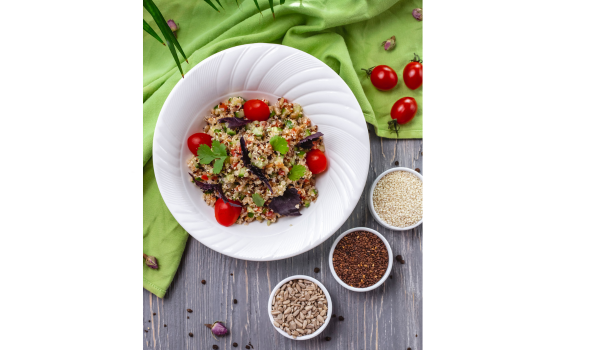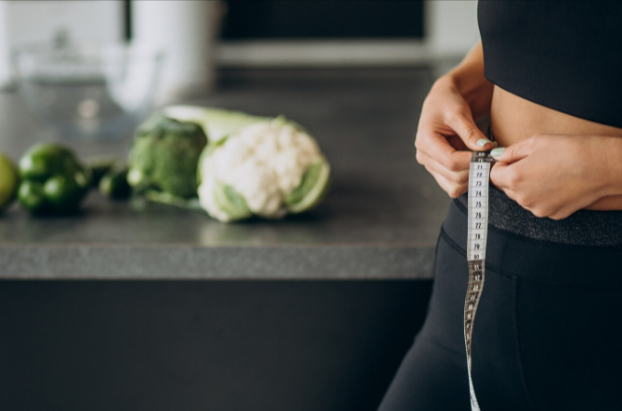Bariatric Seed Recipe For Weight Loss
Bariatric Seed – When it comes to weight loss, particularly after bariatric surgery, it’s essential to focus on healthy, nutrient-dense foods that support the body’s healing process while also aiding in long-term weight management.
Bariatric surgery, including gastric bypass, sleeve gastrectomy, and other procedures, significantly alters how the body processes food, making it important to adapt to new dietary habits.
Among the various nutrient-dense foods recommended for post-bariatric surgery patients, seeds are often overlooked but can be a game-changer.
They are packed with fiber, healthy fats, protein, and essential vitamins and minerals that not only promote weight loss but also support overall health.
In this blog post, we’ll delve into the benefits of incorporating seeds into your bariatric diet, provide a step-by-step bariatric seed recipe for weight loss, and discuss why seeds are an excellent addition to your post-surgery meal plan.

Why Seeds Are Ideal for Bariatric Weight Loss?
Seeds, including chia seeds, flaxseeds, pumpkin seeds, and sunflower seeds, are some of the most nutrient-dense foods you can include in your diet.
They offer numerous benefits for individuals undergoing bariatric surgery or those looking to maintain a healthy weight loss journey.
Here’s why seeds are so beneficial for weight loss, especially for bariatric patients:
✅ High in Fiber
- Fiber is crucial for weight loss, as it helps to regulate digestion, prevent constipation, and keep you feeling fuller for longer.
- Bariatric patients often experience changes in their digestive system post-surgery, and fiber-rich foods can help manage these changes by promoting healthy digestion and improving bowel regularity.
- Seeds like chia seeds and flaxseeds are packed with soluble fiber, which forms a gel-like substance in the stomach, slowing down the digestion process and prolonging satiety.
✅ Rich in Healthy Fats
- Healthy fats, such as omega-3 fatty acids, are essential for heart health and cognitive function.
- They also help keep you feeling satisfied after meals, preventing overeating or constant hunger pangs.
- Seeds, such as chia seeds, flaxseeds, and hemp seeds, are excellent sources of plant-based omega-3s, which are crucial for a balanced, sustainable weight loss plan.
✅ High in Protein
- Protein is another essential nutrient that helps in the repair and building of tissues, and it’s particularly important for bariatric patients who need to support their body’s healing after surgery. Protein also promotes satiety and boosts metabolism.
- Many seeds, including pumpkin seeds and hemp seeds, provide a significant amount of protein per serving, making them an excellent option for individuals looking to maintain muscle mass while losing weight.
✅ Packed with Essential Nutrients
- In addition to fiber, protein, and healthy fats, seeds are rich in essential vitamins and minerals.
- For example, sunflower seeds are a great source of vitamin E, which is important for skin health, while flaxseeds provide lignans, which have antioxidant properties.
- These nutrients are especially important for bariatric patients, who need to ensure they are getting the right balance of vitamins and minerals to avoid deficiencies.
✅ Low in Calories
- Seeds are relatively low in calories when compared to other snacks and foods, making them a great choice for bariatric patients who need to control their calorie intake while still getting the nutrition their bodies need.
- Additionally, the high fiber content of seeds helps to keep you feeling fuller for longer, reducing the temptation to snack on high-calorie, low-nutrient foods.

How to Incorporate Seeds into a Bariatric-Friendly Diet?
After bariatric surgery, the stomach is significantly smaller, and portion sizes are reduced. This makes it crucial to focus on nutrient-dense foods that pack a lot of nutritional value into small portions.
Seeds are an excellent way to do this, as they provide a concentrated source of nutrients, including protein, fiber, and healthy fats.
Here are a few simple ways to incorporate seeds into your diet:
-
Smoothies: Add a tablespoon of chia seeds, flaxseeds, or hemp seeds to your bariatric-friendly smoothie. They’ll blend in easily and provide an extra boost of fiber and protein.
-
Salads: Sprinkle sunflower seeds or pumpkin seeds on top of a salad for a satisfying crunch and extra nutrition.
-
Baked Goods: Add seeds like chia, flax, or pumpkin to bariatric-friendly baked goods, such as muffins or energy bars, for an added nutritional boost.
-
Oatmeal or Porridge: Mix seeds into your morning oatmeal or porridge to increase the fiber content and promote satiety.
-
Yogurt: Top your low-fat yogurt with a mix of seeds to create a nutrient-packed snack or meal.
Bariatric Seed Recipe for Weight Loss: A Nutritious Seed Snack
This bariatric seed recipe combines the power of chia, flax, and pumpkin seeds to create a delicious, nutritious, and satisfying snack that is perfect for those on a post-bariatric surgery weight loss journey.
This recipe is high in protein, fiber, healthy fats, and essential vitamins and minerals, making it an ideal choice for maintaining weight loss and supporting overall health.
Ingredients
-
2 tablespoons chia seeds
-
2 tablespoons ground flaxseeds
-
2 tablespoons pumpkin seeds (unsalted)
-
1 tablespoon sunflower seeds (unsalted)
-
1/2 cup unsweetened almond milk (or other plant-based milk)
-
1/4 teaspoon vanilla extract
-
A pinch of cinnamon (optional)
-
1 tablespoon honey or stevia (optional for sweetness)
-
1 tablespoon unsweetened shredded coconut (optional)
Instructions
-
Prepare the Seed Mixture: In a small bowl, combine the chia seeds, ground flaxseeds, pumpkin seeds, and sunflower seeds. Stir the mixture to ensure the seeds are evenly distributed.
-
Add the Liquid: Pour the almond milk into the seed mixture. Stir gently to combine, ensuring the seeds are well-coated with the liquid. If you prefer a thicker texture, you can reduce the amount of almond milk slightly.
-
Flavoring: Add the vanilla extract, cinnamon, and sweetener (if using). Stir until well incorporated. Cinnamon adds a wonderful flavor and also has anti-inflammatory properties, which are beneficial for overall health.
-
Let It Sit: Cover the bowl with a lid or plastic wrap and let it sit in the refrigerator for at least 2-3 hours, or preferably overnight. This allows the chia seeds to absorb the liquid and form a gel-like consistency, which is typical of chia pudding. The longer it sits, the thicker and more satisfying it will be.
-
Optional Toppings: Before serving, sprinkle the unsweetened shredded coconut over the top for added flavor and texture. You can also add a few fresh berries or a dollop of Greek yogurt for an extra boost of nutrients and protein.
-
Serve and Enjoy: Once the seed pudding has set, you can enjoy it as a satisfying breakfast, snack, or dessert. The combination of fiber, protein, and healthy fats will keep you feeling full and satisfied.
Benefits of This Bariatric Seed Recipe
This seed pudding recipe is a powerhouse of nutrients that can greatly benefit anyone on a bariatric weight loss journey:
-
High in Fiber: The chia seeds and flaxseeds provide an excellent source of soluble fiber, which promotes satiety and supports digestion.
-
Rich in Omega-3s: Flaxseeds and chia seeds are loaded with plant-based omega-3 fatty acids, which have anti-inflammatory properties and support heart health.
-
Packed with Protein: Pumpkin seeds are an excellent source of plant-based protein, which helps preserve muscle mass during weight loss.
-
Antioxidants and Micronutrients: Sunflower seeds and flaxseeds are rich in antioxidants like vitamin E, which help protect the body from oxidative stress and support overall health.
-
Low in Sugar and Calories: This recipe is low in sugar and calories, making it suitable for bariatric patients who need to control their calorie intake and avoid blood sugar spikes.
Tips for Success
To ensure you’re getting the most out of this recipe, here are a few tips:
-
Watch Portion Sizes: While seeds are nutrient-dense, they are also calorie-dense. Be mindful of portion sizes to avoid overeating. Stick to the recommended serving size of 2 tablespoons per seed variety.
-
Stay Hydrated: Seeds absorb liquid, so make sure to drink plenty of water throughout the day to support digestion and prevent dehydration.
-
Customize to Your Taste: Feel free to experiment with different seed varieties or add-ins such as a sprinkle of cacao nibs or a handful of berries for added flavor and nutrients.
Conclusion
Incorporating seeds into your post-bariatric surgery diet is an excellent way to enhance your weight loss efforts while ensuring you’re getting the necessary nutrients for long-term health.
Seeds like chia, flax, pumpkin, and sunflower are packed with fiber, healthy fats, and protein, all of which promote satiety, digestion, and muscle maintenance.
This bariatric seed recipe for weight loss is an easy, delicious, and nutritious way to incorporate seeds into your daily routine.
By following this recipe, you can create a satisfying meal or snack that supports your weight loss goals and provides your body with the essential nutrients it needs for recovery and overall well-being.
Remember, weight loss after bariatric surgery is a journey, and making healthy, sustainable choices will set you up for long-term success.
Seeds are a small but powerful part of that equation, helping you stay on track with your goals while nourishing your body.
References
-
Mayo Clinic: Post-Bariatric Surgery Nutrition Guidelines
-
National Institutes of Health (NIH) – Bariatric Surgery and Nutritional Requirements
-
American Society for Metabolic and Bariatric Surgery (ASMBS) – Nutritional Recommendations for Bariatric Surgery
-
Journal of Obesity Surgery: The Role of Fiber in Bariatric Surgery Success
.
.
.
.
.
.